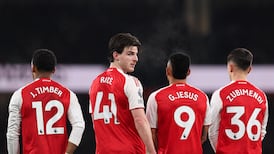Golfing Disasters Part 13: It's funny how perception sometimes masks reality. In the case of golf's Big Three of the 1960s maybe the perception is a reflection of the promoting genius of Mark McCormack, who represented the triumvirate of Arnold Palmer, Jack Nicklaus and Gary Player under that banner.
For sure, they were three magnificent and contrasting players. Nicklaus was undoubtedly the best of the age and maybe of all time. Player travelled the world, captured all four majors and wasn't found wanting on the self-promotion front. Palmer was the people's champion, with oodles of charisma, a go-for-broke attitude and, to be blunt, an ungainly swing that wouldn't have looked out of place on the local Muni.
Between 1965 and 1970 the Big Three won a combined 35 titles on the PGA Tour. In the same period, one other player won 23 all by himself, including a US Open and a US Masters. He played on eight Ryder Cup teams and won the Vardon Trophy for low scoring average five times. And in 1966 he did what the Los Angeles Times Pulitzer Prize-winning columnist Jim Murray said you weren't supposed to do - he beat Palmer in a play-off for the National Open. For good measure he did it by erasing a seven-shot deficit over the final nine holes at San Francisco's Olympic Club.
His name was Billy Casper and to put it in a modern context, Casper against Palmer was like Retief Goosen against Phil Mickelson in last year's final round at Shinnecock Hills. In the end, unruffled efficiency outdid smiling flamboyance.
Palmer and Casper were near the top of the leaderboard throughout and were paired together for the final round, which Palmer started with a three-shot advantage.
When the latter reached the turn in 32 it seemed only a question of how many he would win by. He stood seven ahead of Casper and even a one-over par back nine would see him beat the Open record of 276 set by Ben Hogan at Riviera in 1948.
Casper, a member of the Mormon church, turned to his deep faith. "I kept praying and I knew others were doing the same. I was praying for second place, if nothing else," he said.
Palmer bogeyed the 10th. Both parred the 11th and birdied the 12th, so the lead was six with six to play.
Palmer bogeyed the 13th and both parred the 14th, so now it was five with four to play.
Safe golf should have seen Palmer home, but in typical fashion he went for the flag at the 15th and bogeyed as Casper rolled in a 20-footer for birdie.
Three behind with three to play, Casper began to think he could win the tournament. At the 604-yard 16th he birdied again and Palmer hit a tree and found deep rough and a greenside bunker before scrambling a six to be one ahead with two to play.
Another hooked drive cost Palmer a bogey on the 17th and his seven-shot lead had disappeared in the space of eight holes.
Again Palmer found the left rough off the tee and ended up holing a slippery four-footer for a par at the last. Casper made a regulation four and the rules, then as now, called for an 18-hole play-off.
While not quite as spectacular as the previous day, Palmer again folded on the back nine. Casper holed monster putts on the 11th and 13th to take the lead for the first time all week and Palmer limped home in 40 shots to lose 73 to 69.
He never won another major.
Footnote: Nineteen-year-old Olympic member Johnny Miller finished tied for eighth. Years later in his role as analyst, he termed Casper a genius and the most underrated golfer of all time. Casper's 51 Tour titles and three majors back that up, even if he did sometimes have divine assistance.










